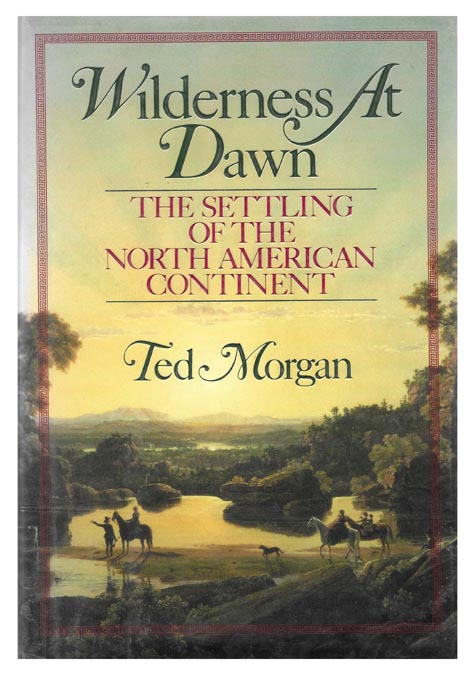

An honest historian will have to address the brutality and maudlin life conditions of immigrants to our shores in the 1600s. It was, according to the books, Wilderness at Dawn, the Settling of the North American continent, by Ted Morgan, “a wilderness and not a deliverance, but a penalty impos’d.”
The frontier was “most foul, scandalous.”
The English, the French, and the Spanish all came and all collided with the Native Americans who had been on the land for the prior 15,000 years. Columbus labeled those natives as Indians and “uncivilized and deficient.” The Indian initial response to the white men was friendly and helpful. That is, until actions told the Indians otherwise.
After a shipwreck, Cabeza de Vaca found himself half-drowned and naked, on a small island south of Galveston, Texas. The Indians lighted fires to warm them and gave them fish and roots to eat and de Vaca and three friends remained as captives eight years among these Cahoques Indians.
The four captives began to admire their ingenuity. In fishing with the bow and arrow, for instance, they could feel on their legs the undulations the fish made below the water’s surface. The Indians were generous and affectionate. When a child died, the whole village wept for a year.
They ate what the Indians ate, including ant eggs, worms, lizards, snakes, and deer dung. They drank the evergreen-bush brew and played with their children. They brought conch shells and sea snails from the Coast and traded them for deerskins and flints.
After the men escaped, they moved into the Sonora Valley about 150 miles away from the Gulf of California. They saw signs of the Christian cruelty. They saw burned-out villages, “skeletons hanging from trees on Spanish ropes and clusters of buzzards by dirt roads,” according to Moran’s book. Without orderly governments and laws, the early white settlers did as the moment pleased them and that often times meant a cruel death to others.
The impetus for settlement in this New World was “private and mercantile, fueled chiefly by the profit motive.” With the decline in farming and flight to the cities of Europe, colonization was seen as a solution to the unemployment issue and away of getting rid of such unwanted elements as “rogues, vagabonds and sturdy beggars.” It was a cocktail of people just ripe for criminal activity, licentiousness and debauchery.
Thirty-two tribes were of the Powhatan people who lived on the Eastern Seaboard. They numbered 14,000 Indians between the bay and the falls of the James River. Indian villages dotted the waterways and houses resembling bark Quonset huts gave off a pleasant smoky smell from the fires that were kept burning. The colonists would proceed cautiously without maps, over unfamiliar terrain as they searched for land that would be a healthy and defensible place with a good harbor. Wherever the white men went, there were Indians.
The settlers had to guard their forts with watchmen both day and night. The triangular fort was made of a high palisade of pointed logs planted in the ground. At each corner a cannon was mounted, which could fire out through openings in the palisade.
To strengthen and restore their souls they had common prayer morning and evening, two sermons each Sunday and holy communion every three months. And the deaths continued from swelling, dysentery, wounds, or the bloody flux. In one month of August 1607, there were nineteen deaths in Jamestown. New ships continued to arrive and brout gentlemen and laborers to make up for all the continuing deaths.
Colonial power clashed with the Indians revolting. The frontier was in collision and violent death prevailed. Life was unpredictable. Squatters were staking their claims as the populations continued westward. And thus the Colonies were giving birth to a new nation conceived in liberty. And dedicated to the idea that all men are created equal.

